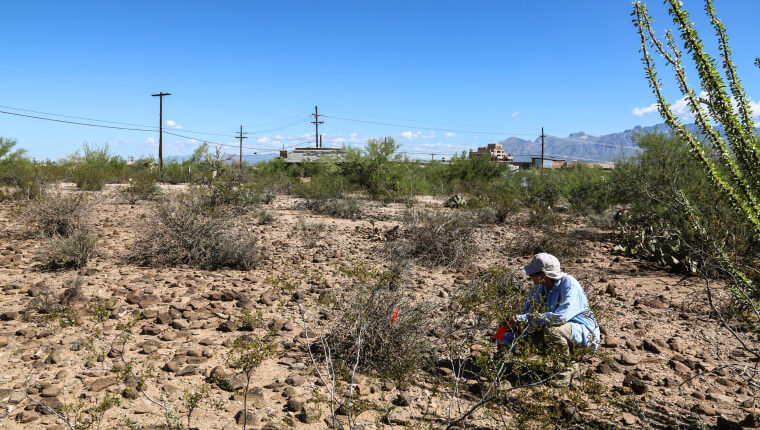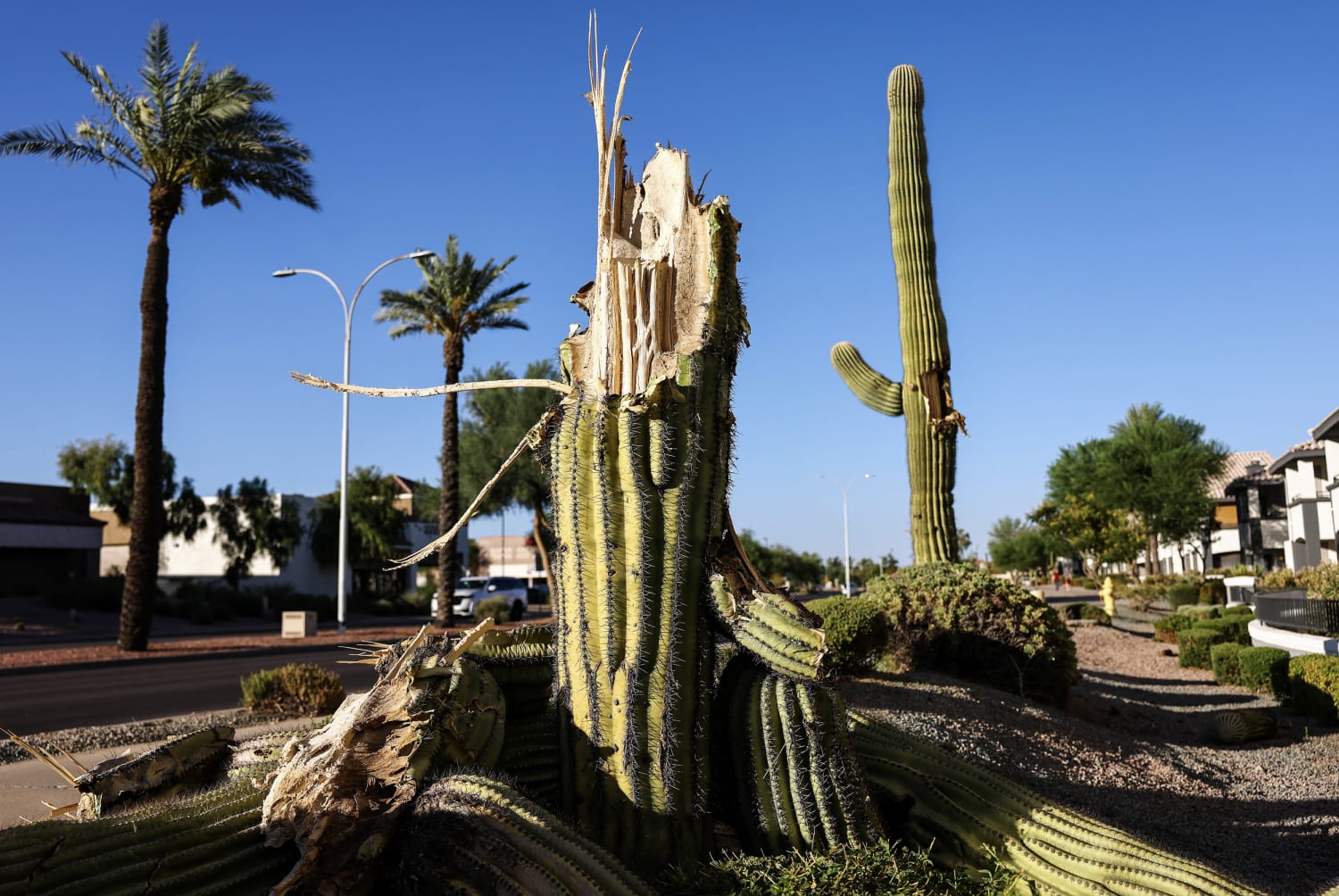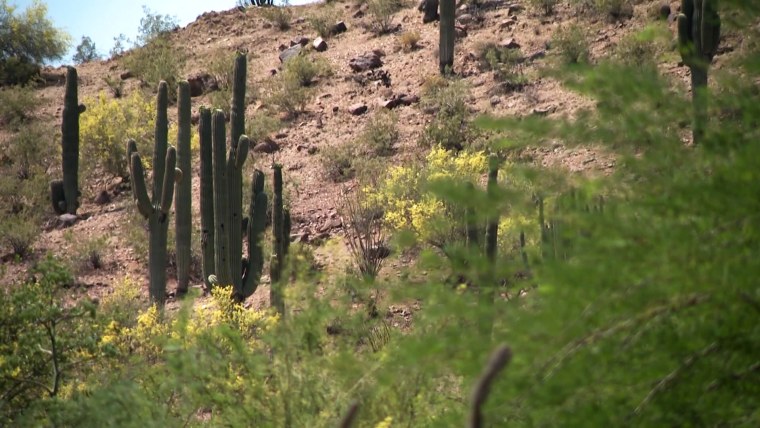Frank Reichenbacher worries it will soon be over for his Tumamoc globeberry — a rare Sonoran desert vine that features a fruit that looks like a tiny watermelon and tastes like dirt.
For 41 years, Reichenbacher, an associate researcher at the University of Arizona’s Tumamoc Desert Lab, has followed the same three patches of the rare plants in southern Arizona — including one on Tucson’s Tumamoc Hill.
The number of Tumamoc globeberry plants has dwindled over the past two decades. An old shade tree toppled last month at one of his sites, and he thinks the recent heat wave — which sent temperatures in Phoenix above 110 degrees for 31 straight days — might do in the rest of his plants.
“Every time I go to my three little populations, I’m thinking, ‘Will this be the last time I visit?’” Reichenbacher said. “It’s been a long time since we’ve had a drought this hot, this deep and this long throughout the Southwest.”
It’s not just the globeberry at stake. Ecologists are concerned the heat wave is pushing some of the plants best adapted to the region’s hot, dry summers past their limits. There are early, concerning signs that the plants that symbolize the Southwest — like saguaro cacti with their iconic arms — have begun to die in some locations as the heat wave punctuates a megadrought that has gone on for about two decades.
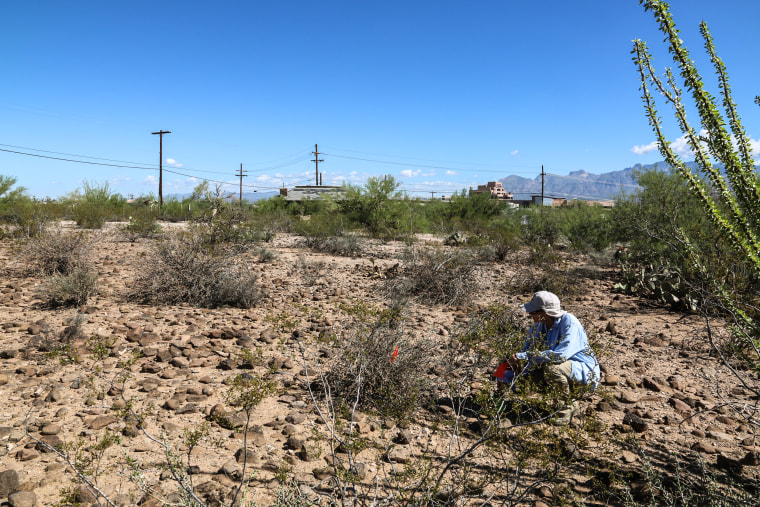
“They’re only adapted to a point,” Reichenbacher said of desert plants. “And then after that, you start getting mortality and you start getting dieback.”
At the Desert Botanical Garden in Phoenix, several saguaro cacti dropped arms last week.
“That’s really striking to us,” said Kimberlie McCue, an ecologist and the chief science officer for the garden. “The fact these saguaros are dropping arms, that’s serious stress on a plant. A normal, healthy saguaro doesn’t drop its arms.”
McCue said the losses to saguaros are significant in Phoenix, but there’s no evidence of an “apocalyptic” mass die-off. Nor is the saguaro forest in the desert disappearing, despite concerns for the species’ health. Yucca and agave plants are struggling also.
Jack Dash, a horticulturist at the Arizona-Sonora Desert Museum in Tucson, said saguaro collapse hasn’t been a concern at the museum, which is higher in elevation than Phoenix and less exposed to urban heat island effects, which can raise temperatures and reflect heat. Dash also noted that transplanted saguaros, which are common in Phoenix, appear to be faring worse.
“The effects aren’t going to be uniform across the Sonoran desert,” Dash said.
It’s the monsoon season in Arizona, but so far, there have been few drenching and sustaining rains. Most of the state is lagging when it comes to monsoon rainfall, according to mapping of monsoon rainfall by the University of Arizona. Monsoon patterns are often responsible for the majority of seasonal rainfall in Arizona.
“We have been holding out hope that maybe the monsoons would pick up in the month of August and bring some relief and these plants could recover,” McCue said last week.
Some parts of Arizona got spots of monsoon rainfall this week, though the National Weather Service office in Phoenix expects a recent cooling trend to give way to warm, dry conditions by the end of this week.
McCue said the Desert Botanical Garden has seen increasing mortality in its saguaro population since 2020, which also had record-breaking heat and little monsoon activity. The garden’s staff that year got calls or emails almost daily about people’s collapsing saguaros. Some agave plants began “melting” and were collapsing on the ground into “mush,” McCue said.
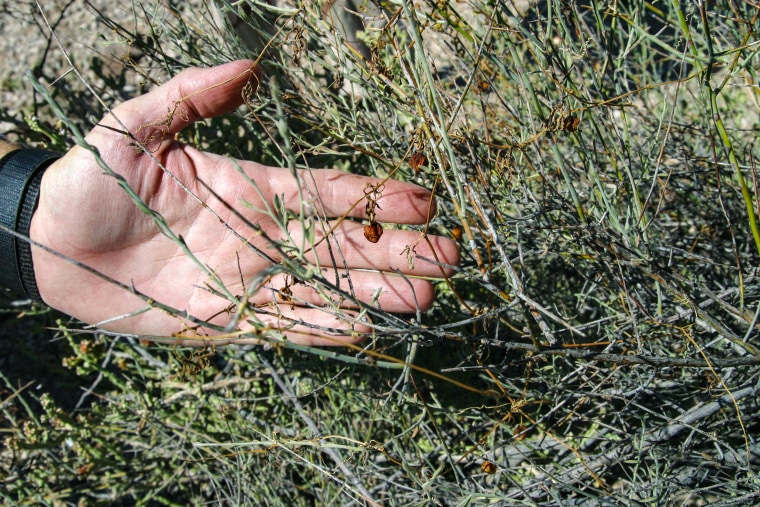
“It’s possible some of what we’re seeing right now is plants compromised by the summer of 2020, and now they’re hit with this event, and that’s all they can take.”
Night temperatures could be playing a role. During the July heat wave in Phoenix, overnight temperatures remained above 90.
Cacti open their pores at night to take in carbon dioxide, which protects water in their tissues by opening when temperatures are lower.High nighttime temperatures could increase the amount of water lost during that process.
“Even these plants have their limits for tolerance,” McCue said.
Even these plants have their limits for tolerance.
Kimberlie McCue, ecologist and chief science officer for the Desert Botanical Garden in Phoenix
It’s too soon to know the fate of the Tumamoc globeberry for sure.
Reichenbacher is trying to make a case for the federal government to put the species back on the endangered list. Reichenbacher said a handful of isolated populations in Arizona are in decline. The plant faces similar struggles in Sonora, Mexico, where it once had a relatively wide range.
The Desert Botanical Garden is storing some Tumamoc globeberry seeds, and Reichenbacher is trying to keep some plants alive at his home greenhouse, which could reinvigorate the species, if necessary.
McCue said people often think of the desert as a wasteland, but it’s rich in biodiversity.
“It supports us in ways most people never know and never have to think about. It’s all worth paying attention to,” she said.
Source: | This article originally belongs to Nbcnews.com
